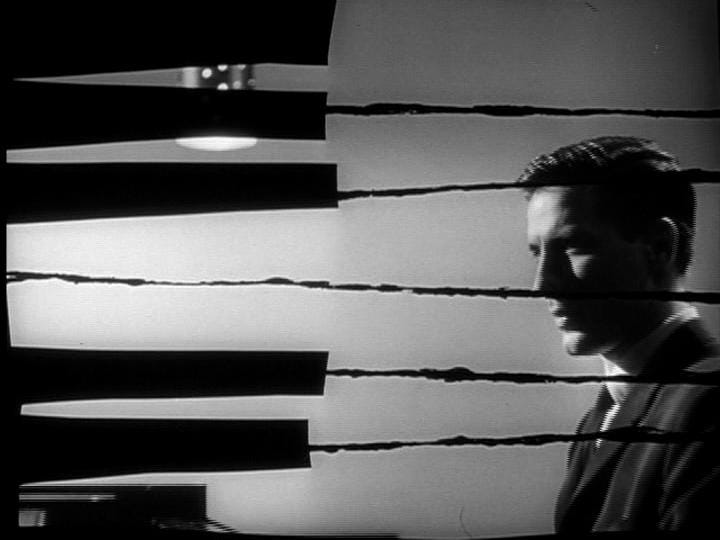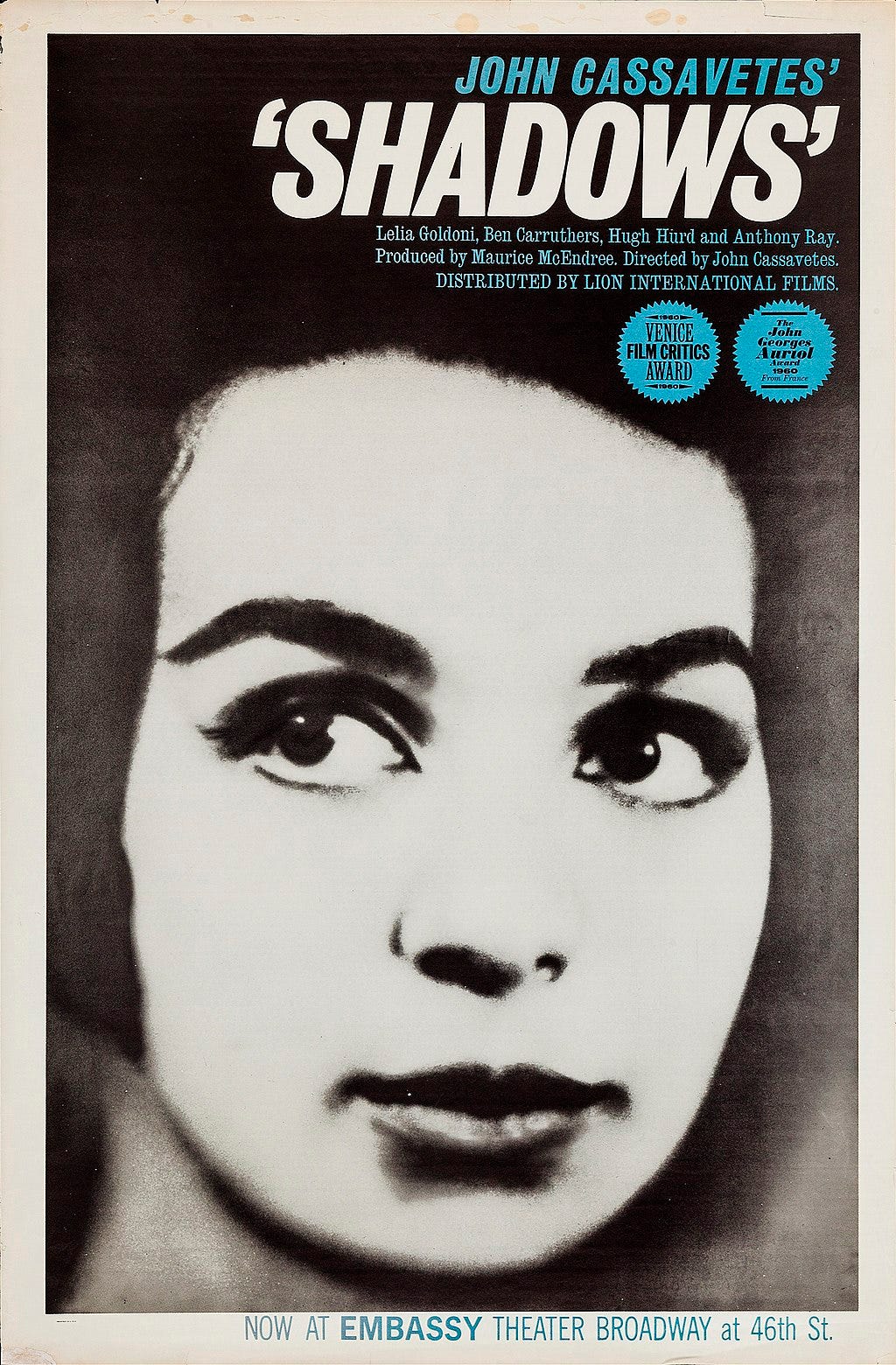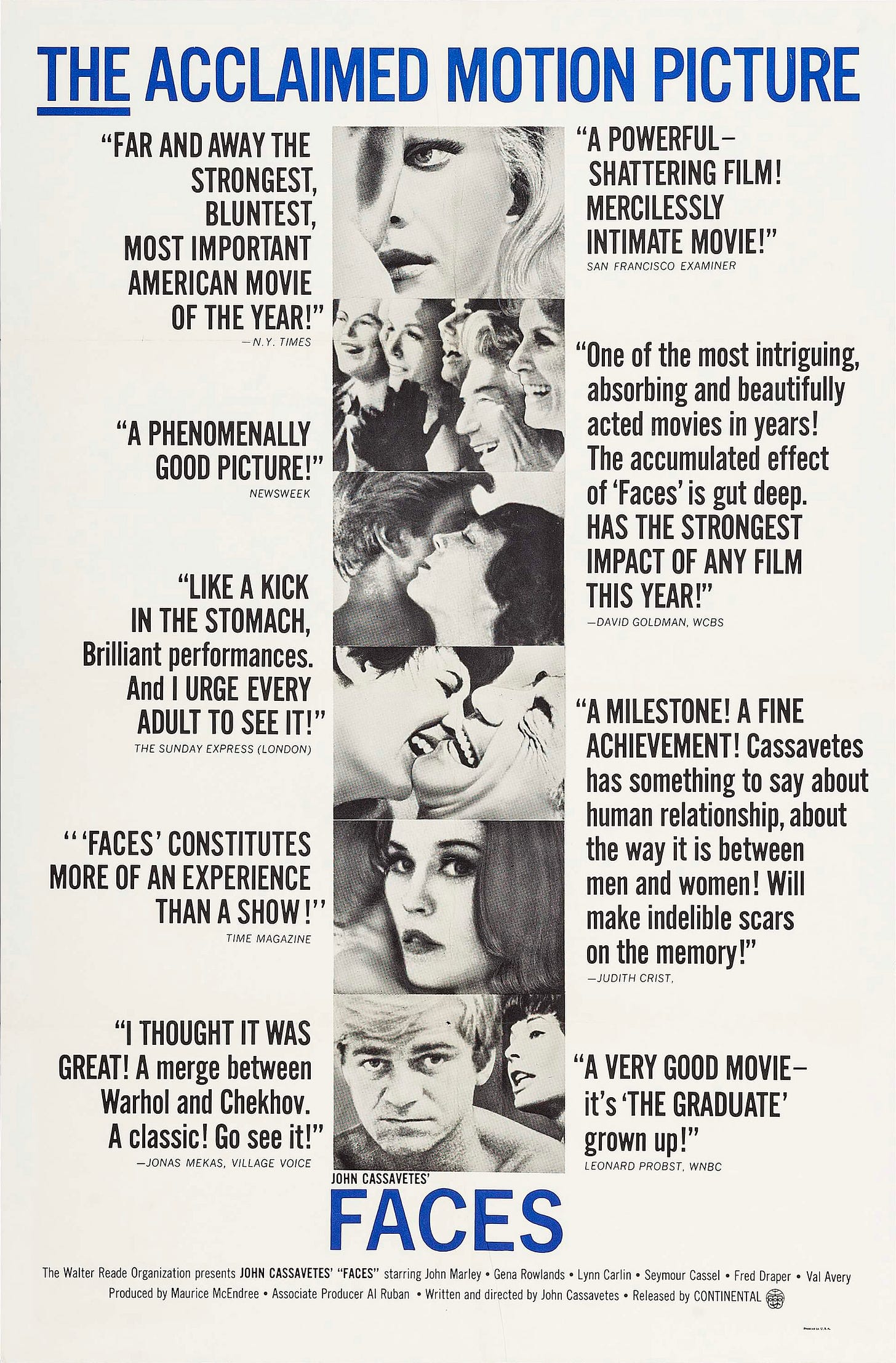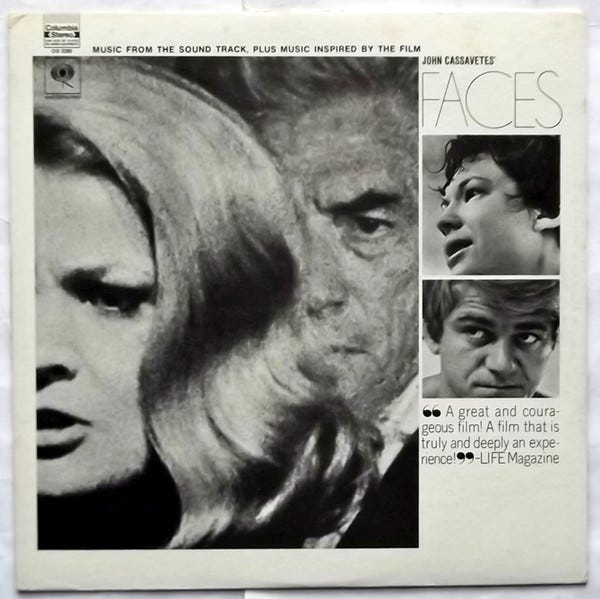John Cassavetes
Out of the shadow...
It’s not a question of understanding, man.
If you feel it you feel it, stupid.
-From Shadows by John Cassavetes
The first time I saw John Cassavetes was in the 1970s in my basement watching an old movie on our black-and-white TV. The movie was Robert Aldrich’s 1967 war film The Dirty Dozen, based on E.M. Nathanson's 1965 bestseller inspired by the "Filthy Thirteen," a real-life WWII behind-the-lines demolition unit from the 101st Airborne Division.
In the film, Cassavetes plays the smart-ass #11 or Victor R. Franko - number 11 of the 12 who make up The Dirty Dozen. By the way, the film also included Jim Brown, the Cleveland Browns running back who announced his retirement while making the film.
Here’s a clip of Cassavetes from the film:
Cassavetes earned an Academy Award nomination for Best Supporting Actor for his performance in the film.
Many years later I ran across John Cassavetes again - on the cover of an obscure Jazz album.
This week on that Big River called Jazz we’ll explore the world of John Cassavetes.
Franko’s defiance in The Dirty Dozen defined John Cassavetes, who in 1959 decided to shake up Hollywood’s film production system. By raising his own funds and using his friends and colleagues exactly how he wanted to, Cassavetes wrote and directed Shadows, a landmark in filmmaking that helped pioneer the independent movie-making business.
To find actors for the film, he put an ad in the paper inviting people to come to a workshop he’d opened. In his words, “I put an ad in the New York Times, and I said anybody who wants to come down to use the workshop to work on acting come on down, and the next day the place was mobbed with people and they were all amateur people, pickpockets, lawyers, bankers, policemen, students, people off the streets who just wanted to come down and work.”
The film’s first version took four months to complete and was pre-screened at the Paris Theater in New York. It was a disaster. But Cassavetes didn’t give up on the film and after a long delay reshot over 10 days what is now considered the second version, which he considered much deeper and with the best scenes in the film. Ultimately only a third of the original version was incorporated in the final cut.
From 1959 to 1960, in the period between shooting the two versions of Shadows, Cassavetes played the title role in Johnny Staccato, an NBC TV series about the would-be musician private detective Johnny Staccato, who plays piano at a New York City jazz club called Waldo's. At the beginning of the first episode, Staccato says, “Why did I leave the village that night? Because I put my musician’s union card in mothballs five years ago, when it dawned on me that my talent was an octave lower than my ambition. So while my heart is still on the bandstand, I pay for the groceries away from the piano.”
I love the graphic intro to the TV series - one of the best of all time - and the cool jazz scene with West Coast Jazz stars Red Norvo on vibes, Barney Kessel on guitar, Pete Condoli on trumpet, Shelly Manne on drums, and Red Mitchell on bass:
Here’s the pilot episode The Naked Truth - the first four minutes are priceless:
In the beginning, when Staccato is called away from the piano on business, he’s replaced by Johnny Williams—also known as John Williams, who later composed soundtracks to Star Wars, Jaws, Raiders of the Lost Ark, and Schindler's List to name a few.
The score from Staccato was composed by Elmer Berstein, who had earlier composed scores for Otto Preminger’s The Man with the Golden Arm (1955) and The Ten Commandments (1956):
From the Staccato soundtrack released by Capitol Records in 1959, here’s The Jazz at Waldo’s:
One thing that strikes me about this album is there are no saxophone credits. For example, who plays the saxophone solos on songs like Staccato's Theme, Thinking of Baby, and Night Mood? Were they just Capitol Records studio musicians? Who plays alto on this one, Walk A Lonely Street - Is it Art Pepper?
Weary of the artistic compromises inherent to working in television but determined to impose a measure of creative control, Cassavetes signed to play Staccato and even directed five episodes. Here’s one he directed, Episode 7, Evil:
Cassavetes was never all that thrilled with Johnny Staccato, but it paid the bills, or as Johnny Staccato himself said, “I pay for the groceries away from the piano.” Still shackled to filming Shadows and with his wife Gena Rowlands terminating her contract with MGM (she was three months pregnant with their first son), their joint income had dropped considerably. The TV series helped Cassavetes cover his debts and finish Shadows, which won the 1960 Critics Award at the Venice Film Festival:
You can watch the film here.
Cassavetes was my kind of guy. With no money, no permits, and a 16mm camera he borrowed from Shirley Clarke who had incidentally just finished directing the jazz-infused independent film The Connection, he hit the streets to film Shadows. Here’s a cool scene filmed at the Museum of Modern Art's Sculpture Garden:
Shadows was also innovative for its soundtrack, composed by Charles Mingus. But as one could predict between these two strong personalities, chaos followed and most of his music was not included in the film’s final version - Mingus’ compositions didn’t fit in the way Cassavetes wanted. In an interview with Stopsmiling, Al Ruban, who worked with Cassavetes on Shadows, recalled:
Mingus worked on a score, but he was more organized than John wanted. And I don’t think that was apparent to John at the beginning. He did all this music, and John loved it, but he really wanted control. John needed to improvise some things because he couldn’t communicate what he wanted to get across.
In the end, contributions from Mingus’ saxophonist Shafi Hadi ultimately did make it into the film’s soundtrack. However, in 2016 Mingus’ soundtrack Charles Mingus – John Cassavetes' Shadows was finally released for the first time by the DOL label:
Here is that album:
Although Self-Portrait in Three Colors never made it into the film, Mingus released it later in 1959 on his Mingus Ah Um album:
I love Neil Fujita’s album cover on this one. I wrote about him and Alex Steinweiss here:
After Shadows, Cassavetes directed two studio films, Too Late Blues (1961) for Paramount and A Child Is Waiting (1963) for United Artists. These experiences essentially drove him back to another indie project. So in 1968, eight years after Shadows, Cassavetes wrote and directed Faces, another independent classic shot in high-contrast 16mm black and white:
Faces was a labor of love and took three and a half years to make. Cassavetes included eclectic music, none of which is heard until almost 40 minutes into the film. I find it interesting that in Faces Cassavetes uses music differently than in Shadows. In Faces, music is heard only as it’s played in the film - be it in a club or from a record player - and not as background music, as with some of Mingus’ music in Shadows.
Also, I find it interesting that Faces has a different vibe and no jazz music, and the film’s soundtrack John Cassavetes' Faces (Music From The Sound Track, Plus Music Inspired By The Film) released by Columbia Masterworks comes across as a jazz album:
Nonetheless, the soundtrack album is worth close listening to. From it, I discovered American composer and songwriter Charlie Smalls, best known for later writing the music and lyrics for the 1975 Broadway musical and 1978 film version of The Wiz. In the last scene of Faces, Cassavetes featured Smalls’ song Never Felt Like This Before. Here’s the vocal version:
Here’s a nice instrumental version included on the soundtrack album, even though it's not in the film:
At the beginning of probably my favorite scene in the film, where Chet yells, “Can we have some music please?”, Cassavetes throws in some Chicago blues with Jimmy Reed’s Life is Funny played on a record player:
However, for some odd reason Reed’s song is not included on the soundtrack - go figure...
Here’s one more for the road. There’s a cool scene in André S. Labarthe and Hubert Knapp’s excellent 1969 documentary on Cassevetes for Cineastes de notre temps, a documentary series produced between 1964 and 1972 dedicated to various influential filmmakers. While the Beach Boys’ California Girls plays on his car radio, the interviewer asks Cassavetes, “Do you like jazz?” He answers, “I like all music. It makes you feel like living. Silence is death.” Here’s the scene:
I think that spirit comes out in Cassavetes’ films.
John Cassavetes died in Los Angeles on February 3, 1989. He was 59 years old. Had he lived longer, I think he would have directed more great films with jazz music at its core. I bet he’s listening to jazz music right now and it probably sounds something like this…
To escape the formidable restrictions of Hollywood, John Cassavetes’ band of rebels and intransigents did it their way, like ordinary people. Perhaps more importantly, Cassavetes embodies art for art's sake, and that’s why I like his movies so much. He was a warrior who, as Fitzgerald wrote in The Great Gatsby, “beat on, boats against the current.”
Next week, on that Big River called Jazz, we’ll dig in our paddles to explore the world of Douglas Records.
If you like so far what you’ve been reading and hearing on our journey and would like to share this with someone you think might be interested in learning more about our great American art form: Jazz, just hit the “Share” button.
From Astaire to Sun Ra: A Jazz Journey is a reader-supported publication. If you feel inclined, subscribe to my journey by hitting the “Subscribe now” button.
Feel free to contact me at any time to talk shop. I welcome and encourage that.
Please hit this link to buy me a cup of coffee, if you’d like to show your guide some appreciation for this and past journeys. Know in advance that I thank you for your kindness and support.
Until then, keep on walking….









A fellow traveler made me aware of this 2017 album by Ohio trumpeter and Kenton alum Tim Hagans:
https://timhagans.bandcamp.com/album/faces-under-the-influence-a-jazz-tribute-to-john-cassavetes
Here is Hagans talking about his CD:
https://www.youtube.com/watch?v=RZcxQOSW4WM
I had not heard of Hagans and wonder if he's still playing these days. Is he in the US or Europe - Does anyone know?
Learned a lot about Cassavetes from your post and excited to revisit his work with a deeper perspective on it. Thanks for sharing.